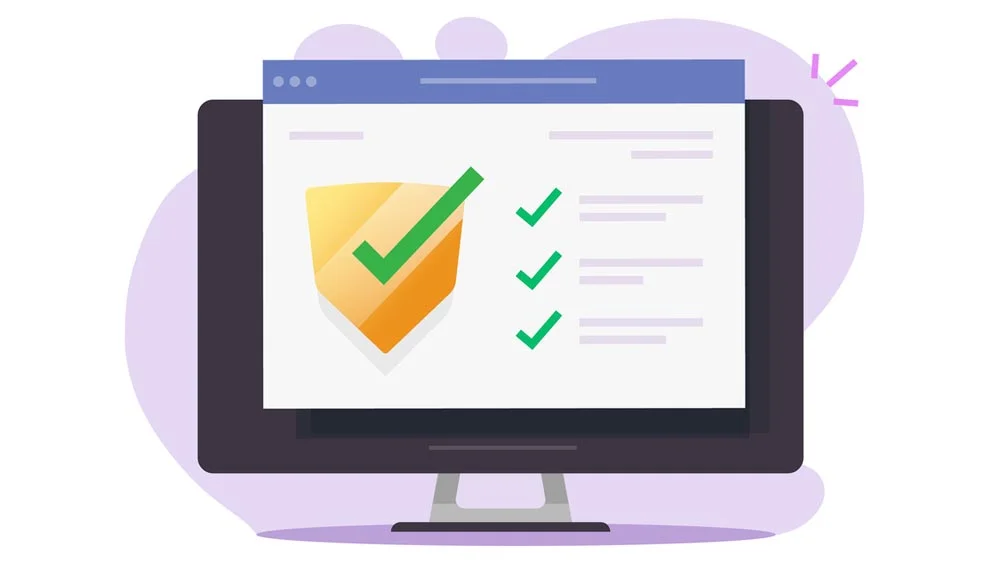Securing mobile apps today is vital. App developers must prioritize safety from the outset, given the evolving nature of cybersecurity threats. Understanding how to protect data and the path to mobile app security isn’t just for the experts. it’s something all developers should embrace. From initial design through updates, securing your app requires clear practices and effective collaboration.
Stay with us as we explore key strategies for making your apps safer and more secure.
1. Designing with Security in Mind
From the word go, embedding security into app design helps shield against vulnerabilities.
A proactive approach anticipates threats before they arise, integrating protective features seamlessly. Structuring architecture around secure frameworks ensures robust defenses.
Encrypt sensitive data within all layers and employ sandboxing to isolate processes effectively.
Not merely a box-ticking exercise, security by design is an evolving mindset that strengthens over time, protecting users and data alike.
2. Implementing Secure Coding Practices
An app’s code should act like a fortress, defending against intrusions in every development phase.
Emphasizing clean, secure coding mitigates risks from common threats like injection attacks and cross-site scripting. Regular code reviews and audits bolster this defense, catching vulnerabilities early.
Also, it helps to utilize established libraries for sensitive operations to reduce errors. These practices not only ensure safety but also build user trust over time.
3. Collaboration with Cybersecurity Professionals
Trusting your instincts is good, but working alongside cybersecurity professionals brings depth to mobile app security.
Their expertise identifies potential blind spots, offering insights beyond routine practices. Leveraging their knowledge keeps you ahead of emerging threats and improves overall system integrity.
Collaborating with an expert IT support provider like USWired enhances your cyber defenses by offering tailored cybersecurity solutions, allowing developers to concentrate on creating innovative mobile apps.
4. Importance of Data Encryption Techniques
Encrypting data transforms sensitive information into unreadable code, protecting it from unauthorized access.
Applying strong encryption methods is like wrapping a shield around your data, ensuring only intended users decipher the content.
Understanding why application security matters guides developers in choosing appropriate algorithms and protocols for robust defense. Adopting end-to-end encryption assures users their personal details remain private throughout transmission, boosting confidence in-app security.
5. Leveraging Authentication and Authorization Methods
Access control is another cornerstone that developers must master when building secure mobile apps.
Robust authentication ensures users are who they claim to be, while authorization defines what they’re allowed to do.
To ensure this, developers need to:
- Implement multi-factor authentication (MFA)
- Utilize OAuth2 for secure API access
- Regularly update permission levels
These practices not only enhance app security but also provide peace of mind for users, knowing their data stays protected from unauthorized hands.
6. Regular Security Testing Procedures
App development demands rigorous security testing to identify vulnerabilities early on.
Static and dynamic testing provides a dual layer of protection, evaluating code structure and runtime behavior alike. Penetration testing simulates real-world attacks, uncovering potential exploits before they become threats.
This thorough approach equips developers with valuable insights into their app’s resilience against various cyber risks, fostering robust defenses that keep users’ data secure and trustworthy.
Symmetric vs. Asymmetric Encryption:
Two of the most common encryption types are symmetric and asymmetric, each with distinct roles in data security. Symmetric encryption uses a single key for both encryption and decryption, ideal for speed. Meanwhile, asymmetric employs two keys—public and private—for added security in key exchanges.
Understanding when to apply each technique can significantly enhance an app’s overall protection strategy, balancing efficiency with robust defense mechanisms.
Implementing End-to-End Encryption in Mobile Apps:
Securing user data end-to-end involves encrypting information from sender to recipient, ensuring privacy. This technique protects messages from interception during transmission, keeping sensitive content away from unauthorized eyes.
Employing protocols like Signal Protocol offers robust protection, promoting trustworthiness in communication apps by preventing third-party access while maintaining seamless user interaction and experience across digital platforms.
The Role of SSL/TLS in Protecting Data:
Establishing secure connections on mobile apps often hinges on implementing SSL/TLS protocols. These encryption standards facilitate safe data exchanges between users and servers, maintaining confidentiality during online transactions.
Through a process known as the “handshake,” they authenticate involved parties and establish encrypted links, ensuring sensitive information remains private.
SSL/TLS enhances data protection by offering:
- Data Encryption
- Authentication
- Data Integrity
- Protection against Eavesdropping
- Secure File Transfers
By enabling these functions, developers strengthen trust with users who rely on apps to safeguard their personal details from malicious attacks in today’s interconnected digital landscape.
Evaluating Modern Encryption Algorithms for App Security:
AES, RSA, and various other algorithms exist to fortify app security. Each serves a distinct purpose in protecting sensitive information. AES excels in speed and efficiency, while RSA ensures secure key exchanges through its asymmetric design.
Choosing the right algorithm enhances data protection capabilities, enabling developers to build apps that maintain user privacy amidst evolving cyber threats.
7. Post-Launch Monitoring for Threats
Even the most secure software can have vulnerabilities that cybercriminals can exploit. That’s, of course, given the advances in technology. This is why, upon launching your app, you want to have a plan in place to continually monitor and adapt.
Vigilant threat detection guarantees the prompt identification and resolution of vulnerabilities before their exploitation. Utilizing real-time analytics tools allows developers to track unusual activities and potential breaches swiftly. Additionally, gathering user feedback helps spot areas needing improvement that might otherwise go unnoticed.
Implementing regular updates further fortifies security by patching known vulnerabilities while adapting new protective measures against emerging threats. Doing so maintains user trust as they feel safe engaging with an actively monitored application consistently committed to their protection.
8. Building a Comprehensive Incident Response Plan
So what do you do if a malicious actor finally manages to break through your app’s security defenses?
Having a well-crafted incident response plan is essential. It ensures quick and efficient handling of breaches, minimizing damage and data loss.
This involves establishing clear communication channels among team members, identifying roles and responsibilities, and setting protocols for rapid threat assessment. Regularly reviewing and updating this plan keeps it relevant amidst evolving threats, ensuring resilience against cyberattacks while maintaining user trust in the process.
9. The Role of User Education in Mobile App Security
Last but certainly not least, empowering users through education is crucial for enhancing app security.
When users understand the importance of strong passwords, recognizing phishing attempts, and safeguarding personal data, they contribute actively to protecting their information.
Incorporating in-app tutorials or reminders about security best practices strengthens this understanding. Informed users can significantly reduce risk by identifying potential threats early on and avoiding behaviors that might compromise their data’s safety.
End Note
Prioritizing mobile app security empowers developers to create safe, reliable experiences. By embedding robust practices throughout the development lifecycle, we protect user data and build trust. Security remains essential in navigating today’s ever-evolving digital landscape.





